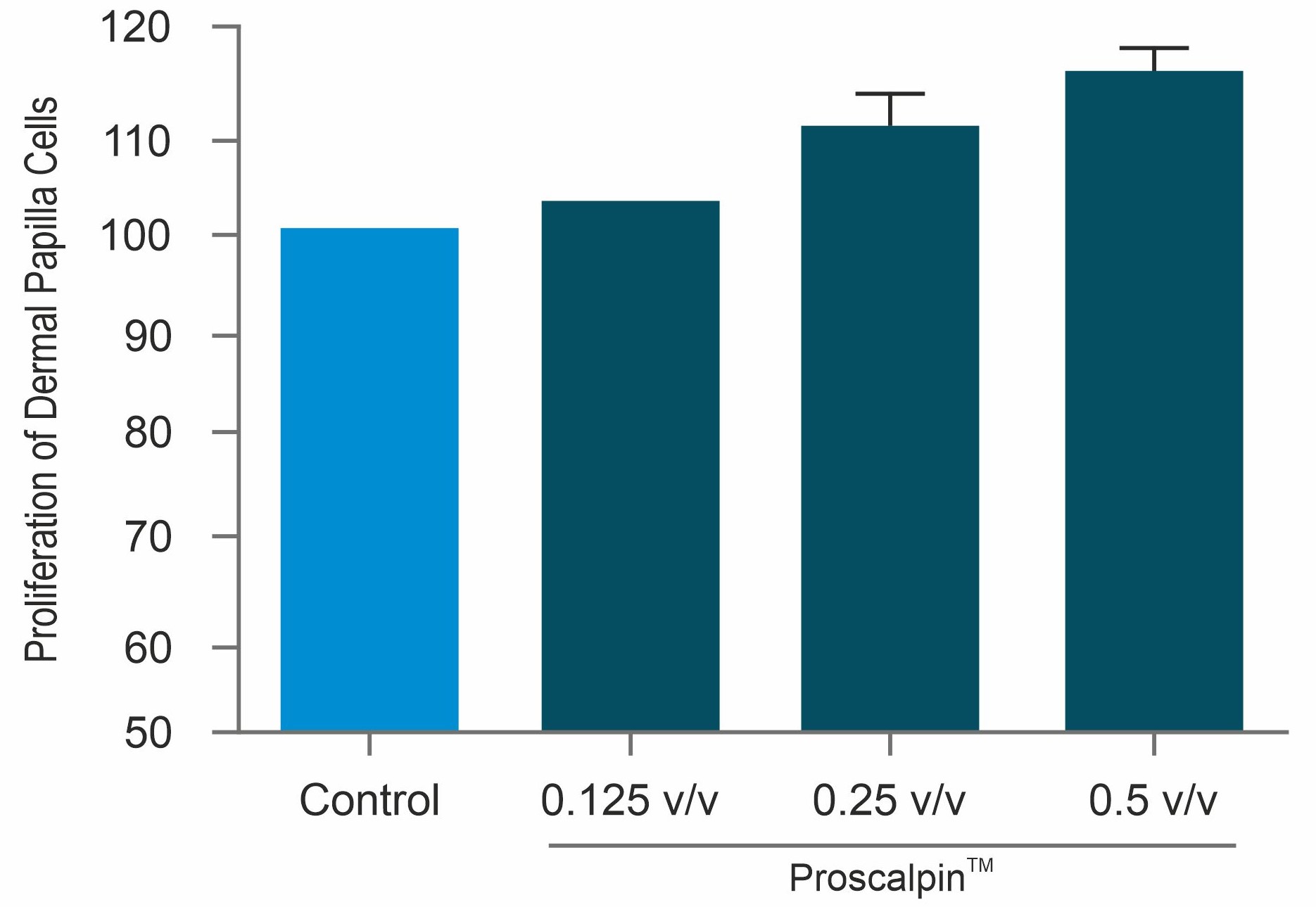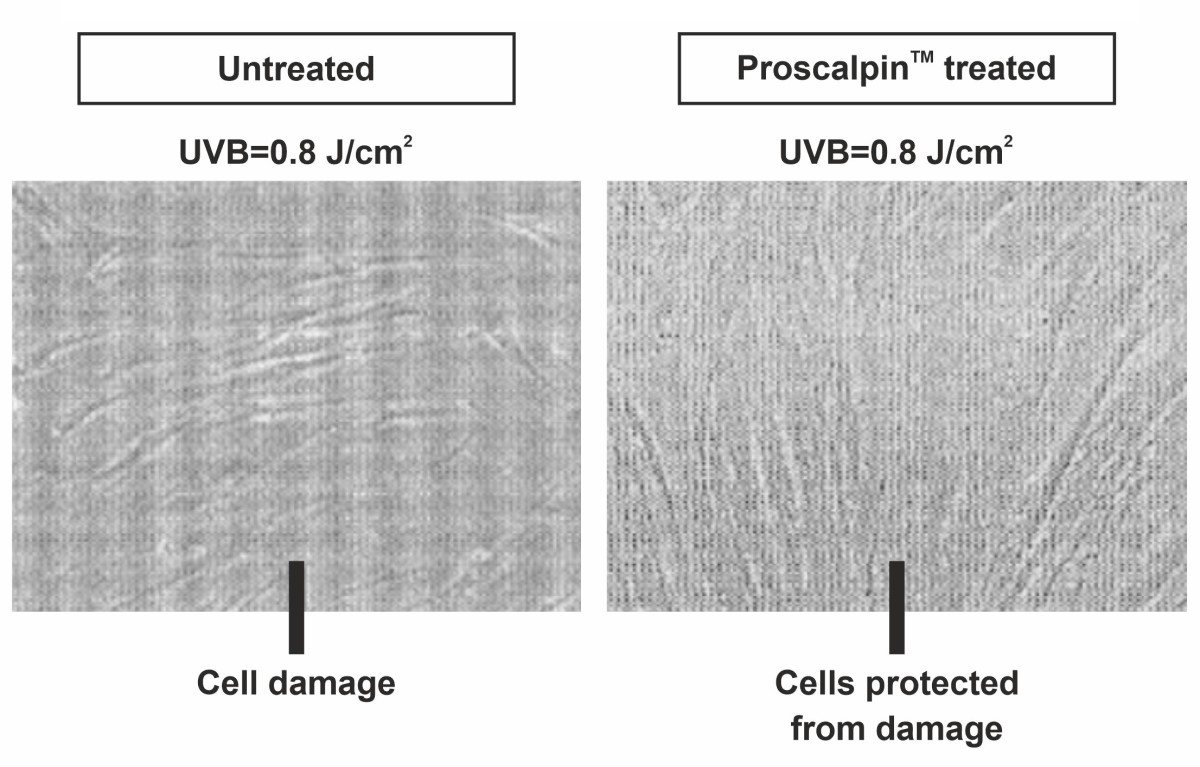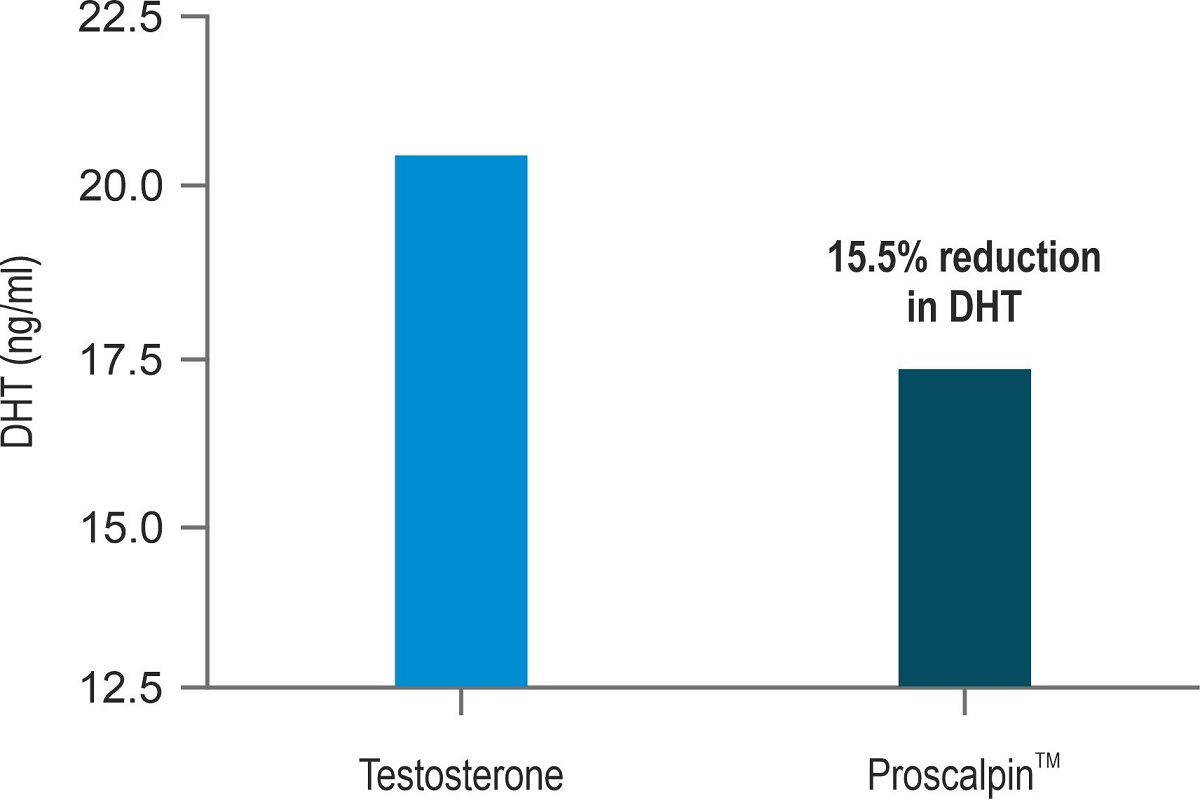Hair is one of the fastest growing tissues of the human body. Hair follicles undergo repetitive regenerative cycles consisting of active stage anagen (rapid growth), physiological involution stage catagen (regression), and resting stage telogen. Extending the anagen phase is an efficient treatment for the prevention of hair loss.
Hair proliferation is controlled by androgen hormones, which shorten the anagen phase by targeting dermal papilla cells of the hair follicle. The 5α-dihydrotestosterone (5 DHT), potent active metabolite generated by 5α-reductase has greater affinity towards androgen receptors in dermal papilla cells. Inhibiting 5α-reductase reduces the 5 DHT, thus extending the anagen or hair growth phase.
Ultraviolet (UV) radiation from solar radiation has deeply penetrating capacity and generates reactive oxygen species (ROS) in the skin. These causes oxidative stress in the dermis which leads to senescence, cell death, inflammation, and alterative gene expression. Thus, UV is considered a major factor of external stimuli that irritates the skin. UV radiation impairs the intracellular functions by inducing DNA damage, generation of ROS and repression of growth and cycling of hair follicles.
Proscalpin™ capability to promote hair growth was assessed by estimating the
a) Proliferation of Human Follicle Dermal Papilla cells (HFDPC)
b) Protection of dermal papilla cells from UV radiation, and
c) Inhibition of 5α-reductase
a) Proliferation of Human Follicle Dermal Papilla cells (HFDPC)
Proscalpin™ showed increase in the proliferation of dermal papilla cells in a dose-dependent manner with 16.65% proliferation in vitro at 0.5% v/v Proscalpin™ concentration, compared to 15.5% by Minoxidil at 1%. Thus, helps to control the balance of hair fall and growth, maintain hair density.

b) Protection of dermal papilla cells from UV radiation
Proscalpin™ treatment prevented the UV damage and protected almost 95% of the HFDPC from death even at high dose of UV exposure.

c) Inhibition of 5α-reductase
Proscalpin™ showed 15.5% inhibition of 5α-reductase enzyme production in testosterone treated HFDPC cells.
